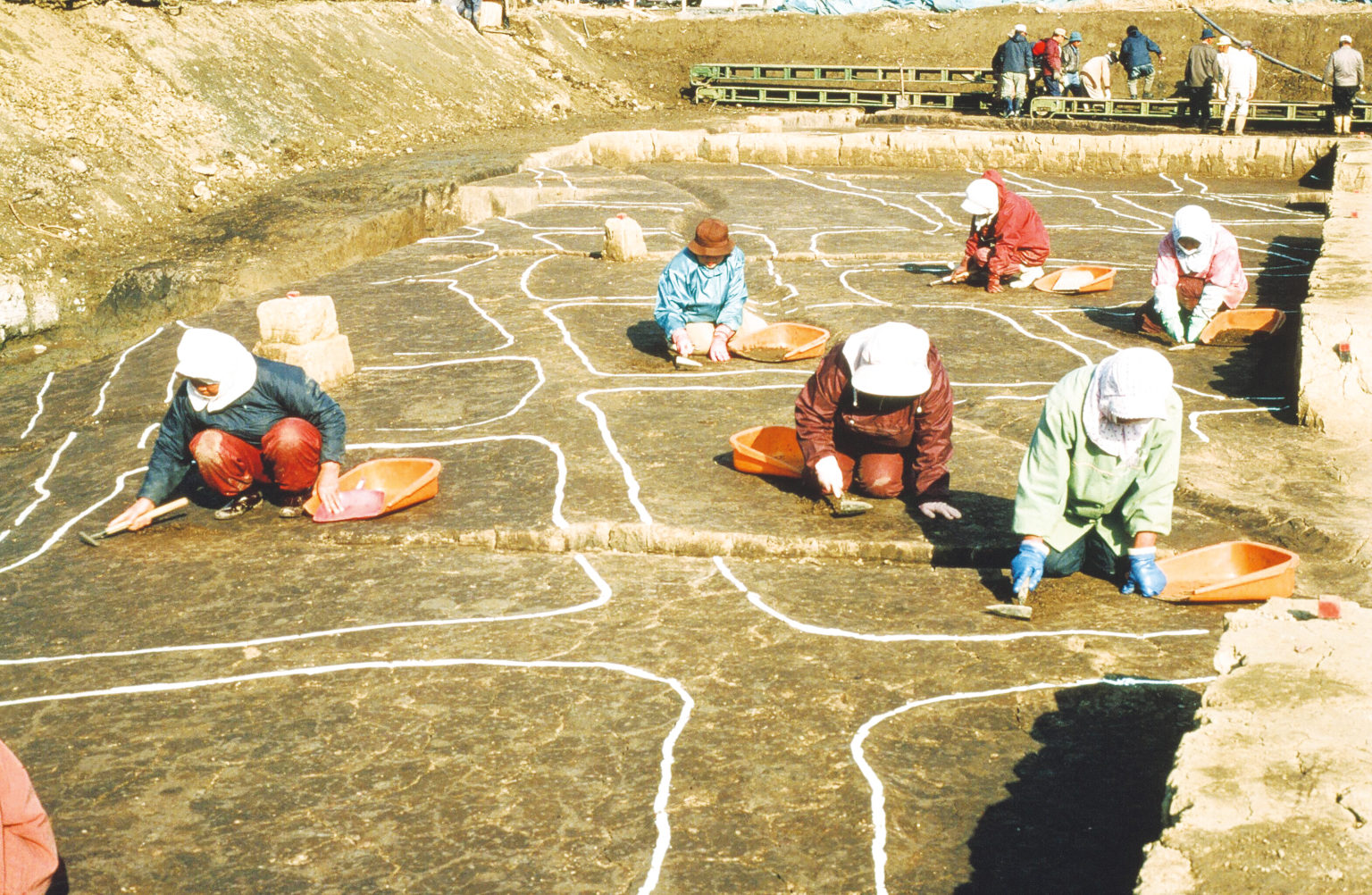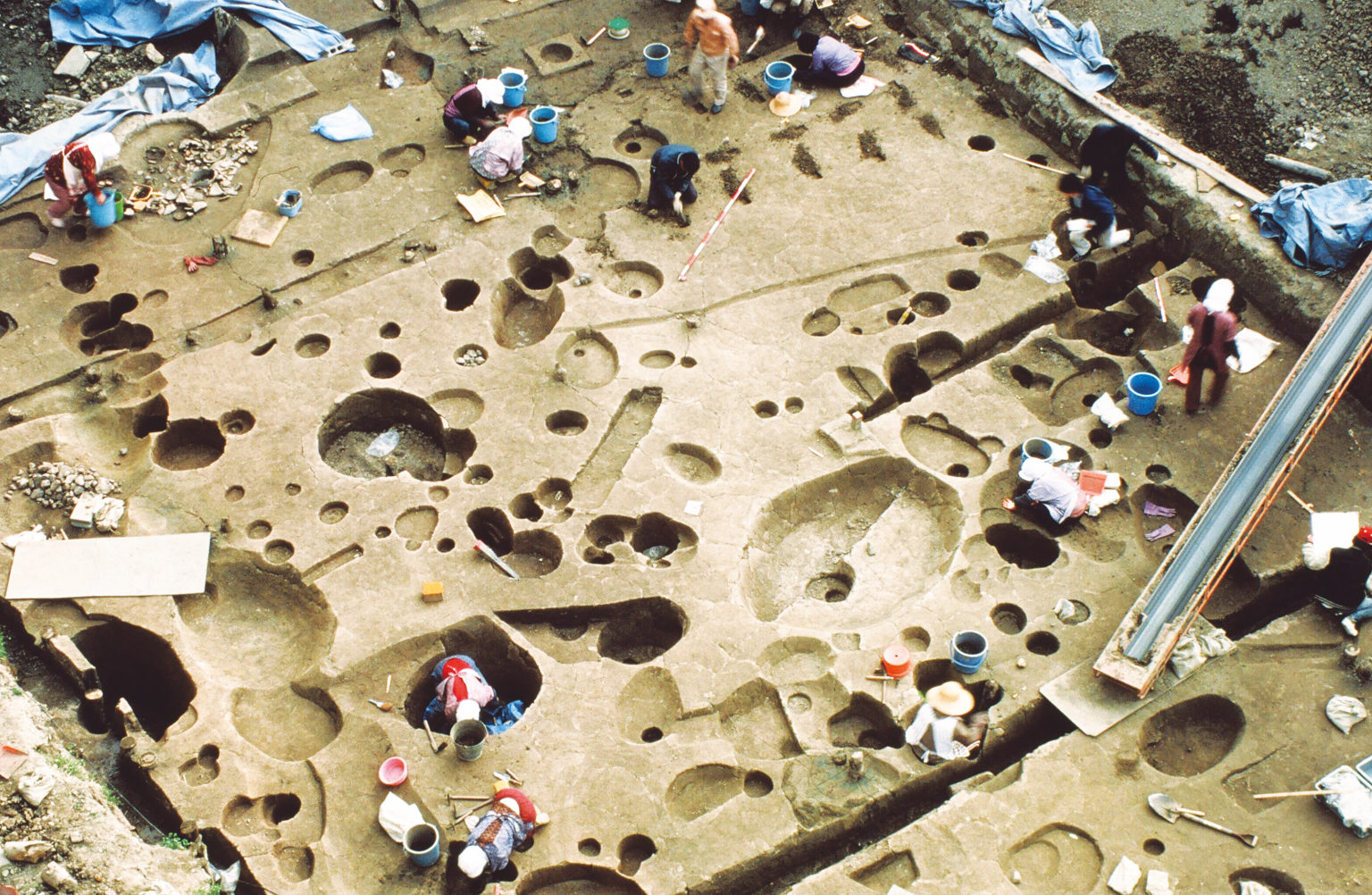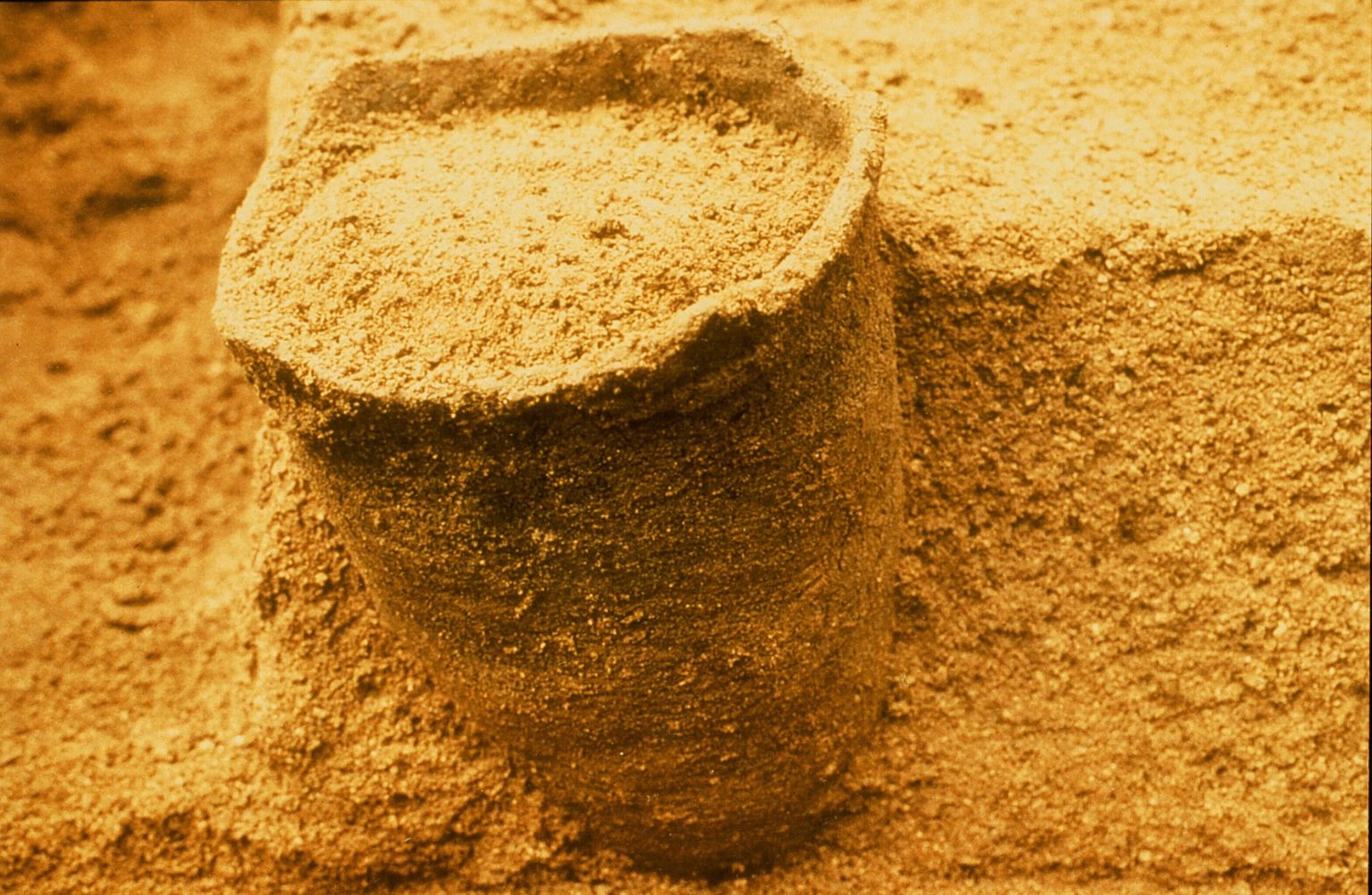Archaeological sites within the university
Archaeological sites within the university
As of FY 2021, 71 archaeological excavations have been conducted at Okayama University: 40 at the Tsushima-okadai site, 29 at the Shikata site, and two at the Fukuro site. Results of these excavations have been published in numerous site reports, including 21 for Tsushima-okadai, 16 for Shikata, and one for Fukuro.
The Tsushima-okadai site
In addition to being one of the most well-known Jōmon settlements of Western Japan, findings from this site have greatly contributed to clarifying the development of paddy fields from the Yayoi through the Early Modern period. It holds additional significance as a wartime site, having been utilized as a Japanese army camp in 1907.

The Shikata site
This site has provided invaluable information concerning the development of settlements from the Middle Yayoi period onward and in particular the structure of sites from the ancient and medieval periods. It is also well known for the discovery of archaeological features and artifacts related to the Shikata manor, a private estate of the Fujiwara regents.

Located on the northern and southern ends of the Okayama Plain, the Tsushima-okadai and Shikata sites are the subject of ongoing archaeological excavation and research. It is particularly noteworthy that, even though these sites are located in an urban setting, a significant extent of each site has been excavated, allowing a fuller understanding of the ancient history of this region and revealing its cultural diversity. Particular emphasis is placed on interdisciplinary joint research with the natural sciences, including geoenvironmental analysis through coring surveys, analysis of unearthed seeds and wooden objects, and dating of features and artifacts.
The Fukuro site
This site was discovered in 1997 during construction at what is now the Institute for Planetary Materials. Features and artifacts have been discovered dating from the end of the Initial Jōmon period, approximately 8000 years ago, through the medieval period, revealing for the first time the history of the Misasa area.


